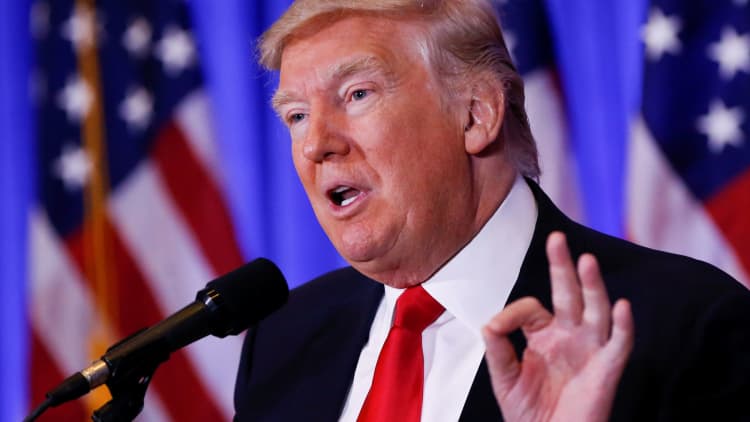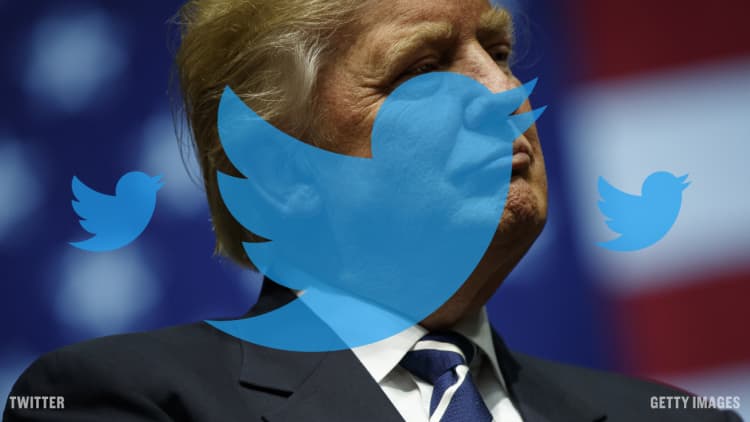
Donald Trump wasn't asked much about the economy during his press conference on Wednesday, but when he was, the president-elect managed a rather colossal error.
Trump said that there "are 96 million wanting a job and they can't get (one). You know that story. The real number. That's the real number."
It is unfortunately very far from the real number. There are in fact 96 million Americans age 16 and older who are not in the labor force. Of this, just 5.4 million, or 91 million fewer than the number cited by Trump, say they want a job. The rest are retired, sick, disabled, running their households or going to school. (This number is 256,000 fewer than last year and 1.7 million fewer than the all-time high for the series in 2013.)
Defining the size of the jobs problem in America is critical for the administration and the Federal Reserve to get economic and monetary policy right. If there is indeed a large cadre of Americans who want work but can't get it, it makes sense to have strong fiscal and monetary stimulus. If that number is shrinking, as the data suggest, it means much less policy is needed and too much could ignite inflation.
A more charitable explanation for Trump would expand the number to include those people who are working part time because they can't find full-time work, all the unemployed and those marginally attached to the workforce. This broader measure of slack in the economy, known as the U6, is about 14.7 million. It's the lowest since May 2008, and has come down by nearly 12 million since the worst of the job market effects of the financial crisis in 2010. And remember, many of these folks have work, though it's part time.
If that's what the president-elect means, he's then only off by 82 million. What about the rest? Perhaps some want jobs, but that's not what is shown in the data, gathered from a monthly survey of some 60,000 Americans. Some are in school. The "not in the labor force" number includes those 16 to 21, prime school age. About 6 percent of the public reported in a 2014 study by the Bureau of Labor Statistics that they are not in the labor force because they are going to school.
About 15 percent say they are retired, a percentage that has risen sharply since baby boomers began retiring. Others cite being sick or disabled, or because of home responsibilities. Again, some of these people may want a job. For example, some students could be induced to work rather than go to school if the job market were stronger. Some retirees might have retired early because of a slow job market.
So, perhaps it's best to look at what's normal.
During the expansion from 2001 thru 2007, the U6 averaged 9.1 percent, or one-tenth of a percentage point lower than it is now. By that standard, only about 150,000 more Americans are under- or unemployed relative to the prerecession average. (That is, the 14.75 million number above should be 14.6 million).
What if you used the best year of the George W. Bush administration, where the U6 fell to 7.9 percent? By that standard, only about 2 million more Americans are under- or unemployed, so the excess slack in the labor market would be more like 12.6 million, rather than 14.7 million.
But that's still a very long way from 96 million.
WATCH: Trump’s tweets can cost a company billions of dollars. Here’s how...



